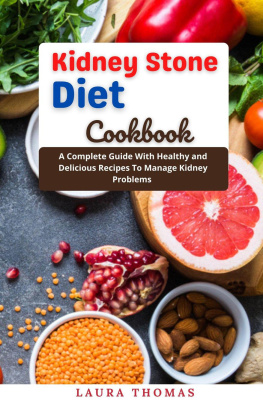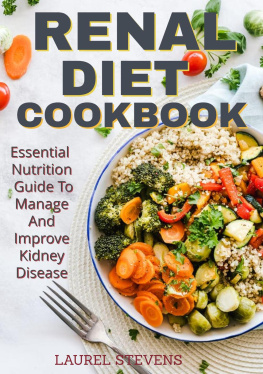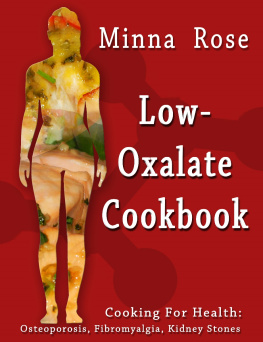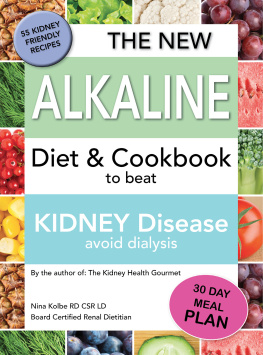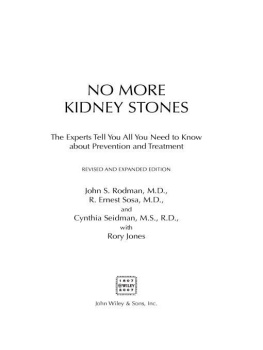Table of Contents
Kidney Stones Hurt!
Ouch! Kidney stones hurt. As medical physicians, weve seen more than our share of people with kidney stones and they were all clear about one thing they hurt! They also seem to disrupt your life at the worst times possible. Ever notice that? Kidney stones are very common. Over a lifetime, there's a 6 to 12 percent chance of the average person getting one - and the numbers are increasing.
Why are kidney stones on the rise? For one, there's more obesity and obesity is a risk factor for kidney stones. Many experts also blame the rise in kidney stones on the Western diet. Its clear that diet plays a central role in the development of kidney stones and kidney stone recurrences. We hope to help you avoid some of the dietary pitfalls so you can avoid another bout with kidney stones.
The Role of Diet in Preventing Kidney Stones
Men are more likely to suffer from kidney stones than women, but kidney stones are on the rise in women. If you have a family history of kidney stones your risk for kidney stones is higher than someone without a family history. If you've had a kidney stone in the past, your chance of getting another one is pretty high.
Here are the statistics. Half of all people who get one kidney stone develop another one within a decade. Even if you manage to get through the next ten years without another one, there's an 8 out of 10 chance you'll get one within 20 to 30 years of the first one. Those aren't very reassuring odds, are they?
Chances are you're reading this e-book because you've already experienced the excruciating pain of kidney stones and don't want to experience it again. Can't blame you for that! Some of our female patients describe the pain as being on par with natural childbirth. That's pretty scary considering it can last for several days!
The good news? Even if you're predisposed to kidney stones due to your genetics, life style or where you live, changing your diet can reduce your risk of having another one. We're here to give you guidance on what to eat and drink and what NOT to eat and drink to avoid another painful encounter with kidney stones.
Our information is based on the most current medical guidelines that we and doctors who specialize in kidney stones currently use. We have seen it help our patients and were confident it can work for you too.
As with most things, what you eat and drink affects your risk of getting a kidney stone. The risk of kidney stones is very much impacted by diet. Thats what this book is all about helping you eat and drink to prevent the pain of kidney stones. After all, you have better things to do than deal with kidney stones.
Lets make sure you understand what your kidneys are and why you get kidney stones first. Then well discuss diet in detail as well as other lifestyle factors that can help you lower your risk for kidney stones in the future.
Your Kidneys: Where They Are and What They Do
Your kidneys are two organs located on each side of your lower back. Most kidneys are about five inches high and about 2.5 inches wide. Though youve probably never seen one, you already know what it looks like. Its the shape of the common kidney bean you cook with hence the name!
Your kidneys are connected to an organ located below your umbilicus (belly button) called the bladder. As you may know, your bladders job is to hold urine until its time to urinate. The narrow connecting tubes between your kidneys and bladder are called ureters. This is where most painful kidney stones get stuck. The combination of your two kidneys, two ureters and bladder make up what your doctors call the urinary tract.
What Causes Kidney Stones and Why Some People Get Them and Others Don't
Why do some unlucky people get them and others sail through life without ever experiencing even one? Blame it on the crystals in your urine. First, lets briefly sum up what your kidneys do. Your kidneys have the important job of filtering your blood and removing waste products. They also regulate fluid levels and remove excess amounts from your body to maintain a happy balance. A certain quantity of minerals and salts enter your urine after theyre passed through your kidneys. Two of these are calcium and oxalate. This is important because these two components make up 70 to 90% of all kidney stones.
In people who develop kidney stones, calcium and oxalate clump together to form crystals. These crystals can, in some cases, attach to the lining of your urinary tract. These clumps of crystals or stones dont cause symptoms unless they break off and start moving through your urinary tract. Since your urinary tract is not very wide, the moving stone frequently gets stuck causing a partial blockage. When a blockage develops, the pressure inside your urinary tract increases and pressure equals sharp, stabbing pain.
People are usually surprised to hear they can have kidney stones and be symptom-free. As long as the stones arent moving or blocking a portion of your urinary tract, you usually dont feel anything. There are people walking around right now with kidney stones who are blissfully unaware of it. Stones can remain inactive for years. BUT, you never know when a "silent" kidney stone is going to start moving through your urinary tract and cause pain.
Why do some people form crystals that lead to kidney stones while others don't? You have minerals and salts in you urine like calcium and oxalate, but you also have "inhibitors" or blockers that keep crystals from forming. These inhibitors help to keep crystals from clumping together to form stones. An example of a kidney stone blocker is citrate.
People who form kidney stones have lower levels of inhibitors like citrate . Citrate is protective because it binds to calcium in the urine, making it unavailable to bind with oxalate . Citrate is your staunch ally when it comes to preventing kidney stones. The good news is changing your diet can increase the amount of citrate that forms in your urine so you're less likely to form kidney crystals and stones.
Another reason kidney stones form is because your urine becomes too concentrated. When this happens, calcium and oxalate are crowded together too closely together in your urine. This makes it easier for them to hook up and form crystals. If you've had a kidney stone, there's a good chance it showed up in the summer. Kidney stones are more common during the summer months when people don't drink enough water. When you dont drink enough water your urine becomes concentrated. This makes it easier for crystals to form that lead to stones. Drinking lots of water keeps urine dilute so calcium and oxalate are less likely to join forces to form kidney crystals and stones.
There's More Than One Type of Kidney Stone
Not all kidney stones are the same. Eight out of ten kidney stones are calcium oxalate stones. If you dont know what kind of stone you had in the past, theres a pretty good chance it was made of calcium oxalate. Here are other types of stones that are less common and their frequency:
- Calcium phosphate stones 70-80%
- Uric acid stones 10%
- Cystine stones <1%
- Struvite stones (usually seen when you have a urinary tract infection caused by certain bacteria) 10%
If you pass a stone and are able to save it, your doctor can send it to be analyzed to see what it's made of. You can buy a kidney stone strainer at the drug store or use fine gauze to strain your urine and try to catch the stone if you feel like youre getting ready to pass one. When checking the strainer for stones, keep in mind that a stone can be quite small, as small as a crystal of salt. At the other end of the spectrum, they can be as large as a ping-pong ball. Ouch and double ouch! You're not going to be able to pass that one so easily. Weve always been amazed at how something as small as a grain of sand can cause such severe pain and distress.
Next page

